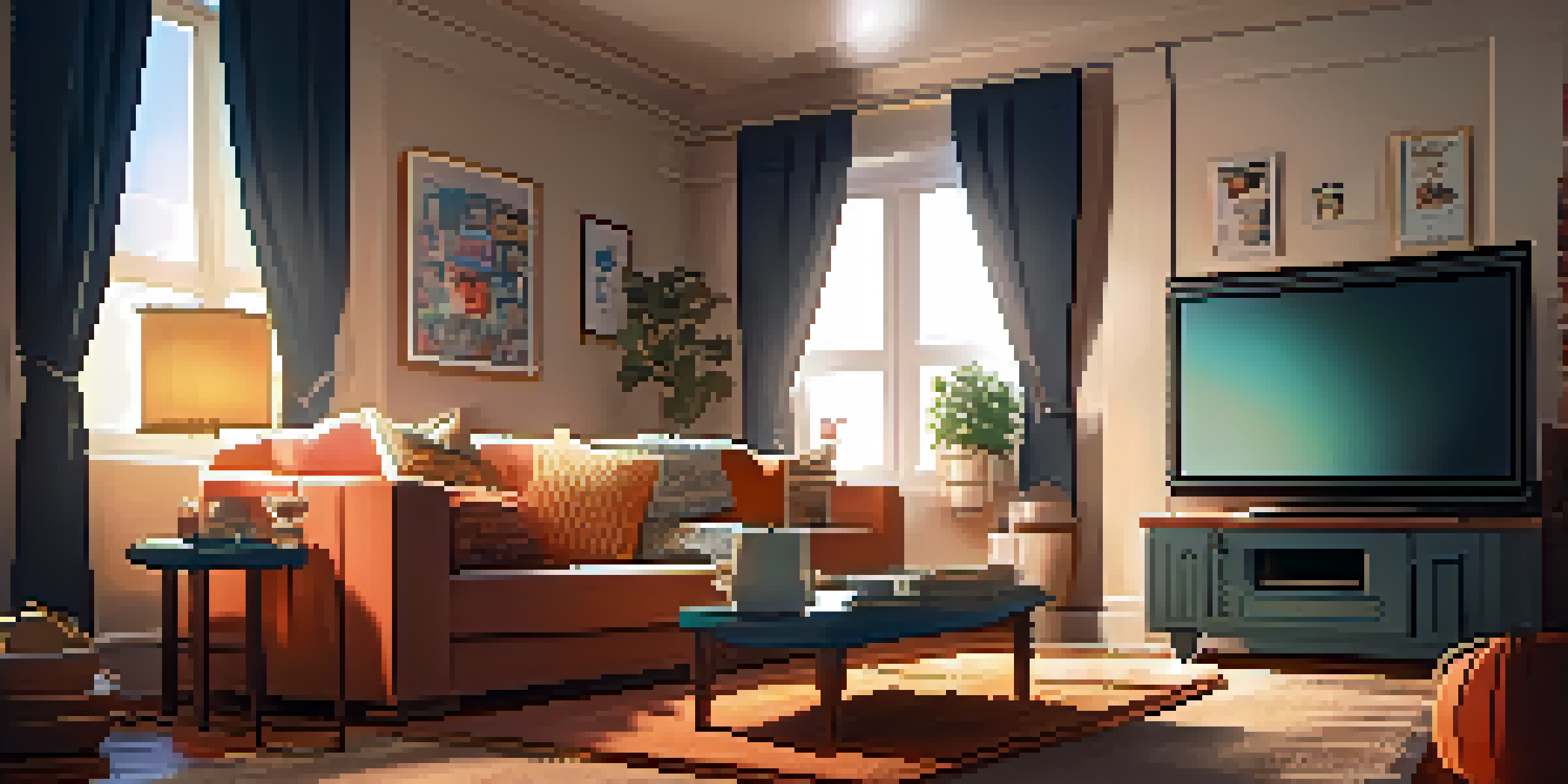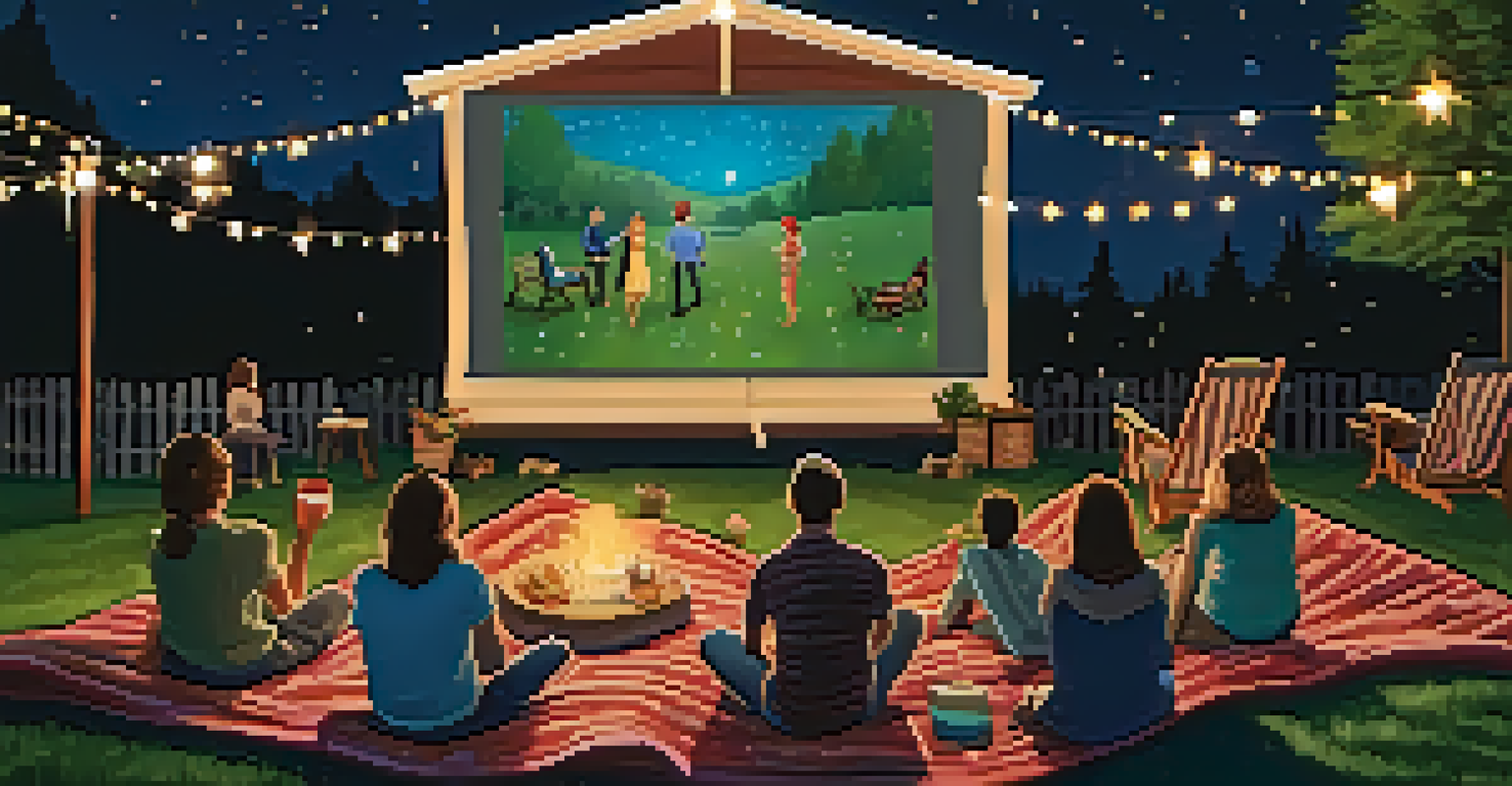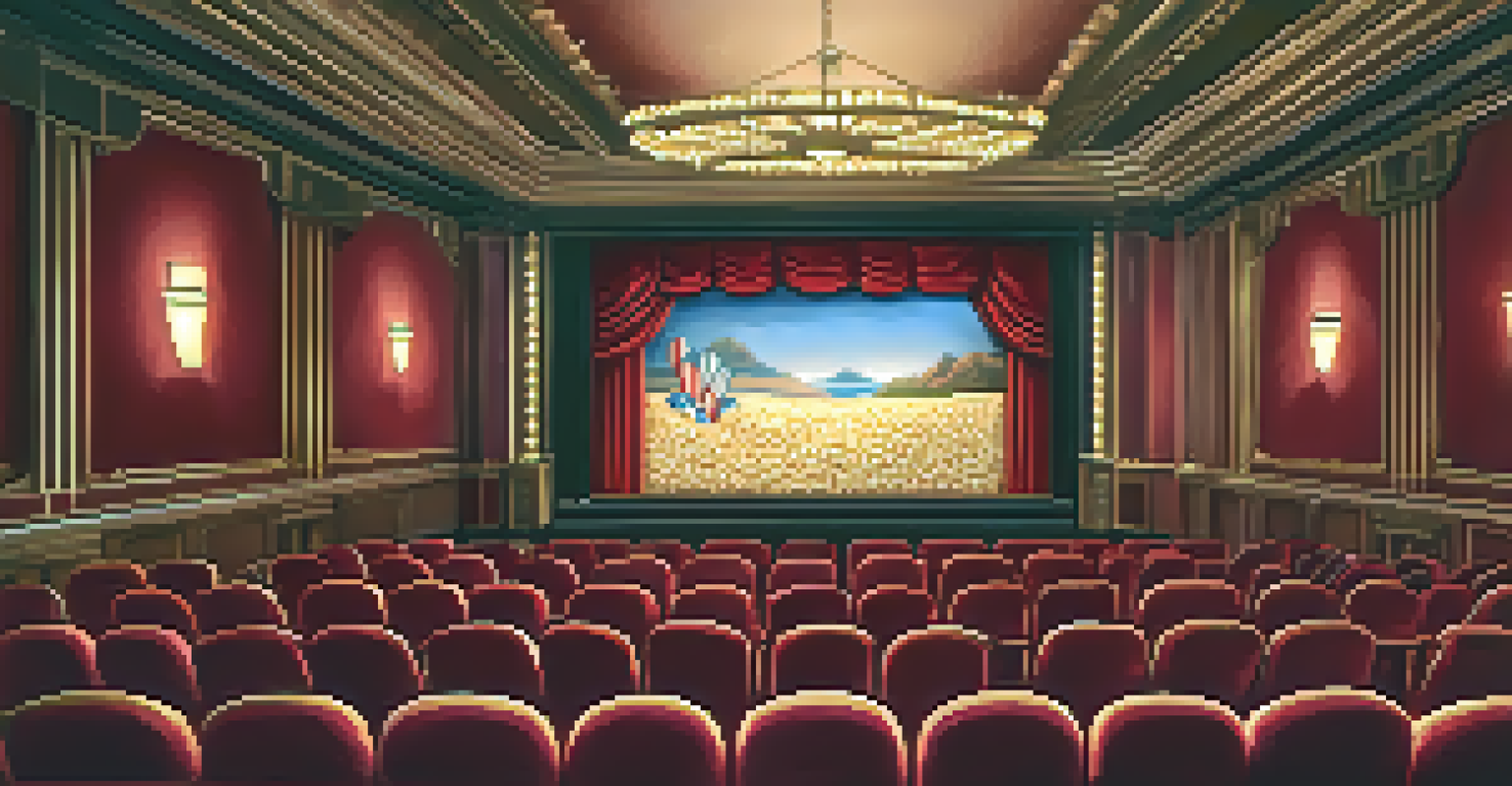The Decline of the Traditional Movie Theater Experience

The Rise of Streaming Services and Home Entertainment
In recent years, streaming services like Netflix and Hulu have revolutionized how we consume films. The convenience of watching movies from home, often at a fraction of the cost of a theater ticket, has led many to opt for their couches over crowded cinema seats. As these platforms continue to produce high-quality content, the allure of the traditional movie theater diminishes.
The theater is a place where we can come together, share stories, and experience the magic of film as a community.
Imagine lounging in your pajamas, popcorn in hand, with the freedom to pause and rewind whenever you please. This comfort is hard to compete with, especially when you can binge-watch an entire series without leaving your living room. The shift in viewing habits has not only changed audience preferences but also the financial dynamics of the film industry.
Moreover, the pandemic accelerated this trend, as many people became accustomed to home viewing. With blockbusters dropping on streaming platforms simultaneously with their theatrical releases, the traditional movie-going experience is increasingly seen as optional rather than essential.
Changing Audience Preferences and Expectations
Today's audiences have different expectations compared to previous generations. The modern viewer prioritizes accessibility and flexibility, often seeking experiences that fit seamlessly into their busy lives. Gone are the days when a trip to the movies was a cherished event; now it’s just one option among many.

The rise of social media also plays a role in shaping these preferences. People often share their viewing experiences online, and with so much content available at their fingertips, they can choose what resonates with them most. This democratization of film consumption means that theaters must work harder to entice diverse audiences into their seats.
Streaming Services Transform Viewing
The rise of streaming platforms has shifted audience preferences towards home viewing, making traditional theaters less appealing.
As a result, theaters are faced with the challenge of reinventing the movie-going experience. Offering unique events, themed screenings, or luxurious amenities can attract audiences, but it raises the question: is it enough to counter the convenience of home viewing?
The Impact of Ticket Prices and Availability
Ticket prices for movie theaters have risen over the years, often making a night out feel like a luxury rather than an everyday activity. For families or groups, the cost of tickets, coupled with concessions, can quickly add up. This financial barrier pushes many to consider alternatives, reinforcing the appeal of watching movies from home.
Cinema is a matter of what's in the frame and what's out of it.
Additionally, with the growing number of films being produced, audiences may find it challenging to keep up with theatrical releases. When faced with limited availability for blockbuster films, viewers may choose to wait for them to hit streaming platforms instead of rushing to the theater. This shift contributes to a perception that the theater experience is becoming less vital.
Ultimately, the economics of movie-watching have changed, and it's not just about the cost; it's about value. Many consumers now weigh the overall experience against the price, often finding that the comforts of home win out over traditional theaters.
The Role of Technology in Film Consumption
Technology has completely transformed how we engage with films, offering greater convenience and interactivity. From smart TVs to mobile devices, watching movies on-the-go has never been easier. This constant access diminishes the urgency to visit a theater, as viewers can enjoy their favorite films anytime, anywhere.
Moreover, advancements in home theater technology have made the experience more immersive. High-definition screens, surround sound systems, and even virtual reality options allow viewers to recreate a cinematic atmosphere at home. This technological shift raises the bar for traditional theaters, which must work to provide an equally impressive experience.
Ticket Prices Impact Cinema Visits
Increasing ticket prices and the convenience of home viewing have made movie theaters feel less essential for many consumers.
As technology continues to evolve, the gap between home viewing and the traditional theater experience may only widen. To stay relevant, theaters will need to innovate and adapt, embracing new technologies to enhance the overall experience for moviegoers.
Shifts in Film Distribution Models
The film industry is undergoing a significant transformation in its distribution models. With the rise of direct-to-consumer strategies, studios are increasingly releasing films on streaming platforms sooner than ever. This shift has caused many to question the traditional window that theaters once enjoyed.
In earlier times, a film's theatrical run was essential for its success and reputation. Nowadays, simultaneous releases on multiple platforms can dilute the significance of the theater experience, making it feel less like a special occasion. This change challenges theaters to redefine their role in the film ecosystem.
As studios experiment with different distribution strategies, the future of traditional movie theaters remains uncertain. The balance between theatrical releases and streaming will likely continue to evolve, impacting how we experience films in the coming years.
Nostalgia vs. Modern Experience
For many, the traditional movie theater experience carries a sense of nostalgia – the smell of popcorn, the excitement of previews, and the shared moments with friends and family. However, this nostalgia may not be enough to draw in newer generations who prioritize different experiences. As younger audiences seek entertainment that aligns with their lifestyles, the traditional model might seem outdated.
This generational gap creates a challenge for theaters to appeal to a diverse audience. While older generations may cherish the classic cinema experience, younger viewers often crave more engaging and interactive entertainment options. This contrast highlights the need for theaters to adapt and evolve.
Theaters Must Adapt to Survive
To thrive in the evolving entertainment landscape, traditional movie theaters need to innovate and enhance the audience experience.
What once felt like an unmissable outing may now simply feel like another choice on a crowded entertainment menu. Bridging this gap and creating a unique, memorable experience will be crucial for theaters looking to thrive in an evolving landscape.
The Future of Movie Theaters
Despite the challenges facing traditional movie theaters, there is still hope for their resurgence. By embracing change and incorporating innovative strategies, theaters can create an experience that resonates with modern audiences. This might include integrating technology, enhancing comfort, or offering unique events that draw people back to the big screen.
Theaters can also capitalize on the community aspect of movie-watching, hosting special events like film festivals or themed nights that foster a sense of camaraderie among viewers. By creating a welcoming and engaging environment, they can rekindle the magic of the cinema experience.

Ultimately, the future of movie theaters will depend on their ability to adapt to changing preferences. As audiences continue to evolve, those theaters that can innovate while honoring the nostalgic elements of film will find a way to coexist with the streaming giants.